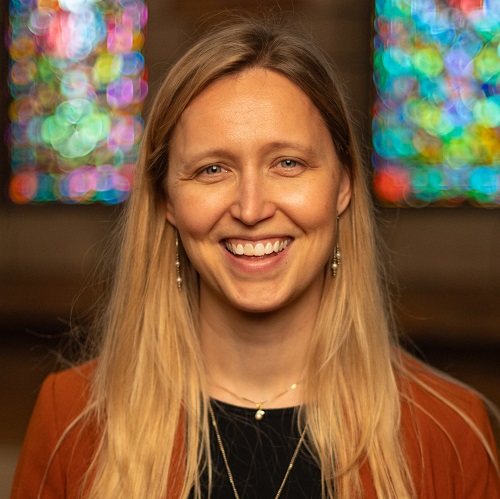Commentary on Ezra 1:1-4; 3:1-4, 10-13
On this third Sunday in Advent, we jump from Isaiah 40 to Ezra 1-3.
There is a considerable chronological gap between our weekly Advent readings, significant enough that you may want to start this sermon by walking through the historical action we’ve covered in the past few weeks. On Advent 1, God spoke to Jeremiah in the midst of an embattled and besieged Jerusalem. On Advent 2, Jerusalem has fallen, and God spoke through Isaiah to the grieving people who fled or were exiled to Babylon (roughly modern-day Baghdad, Iraq). The hopeful tone of Isaiah’s words have led some scholars to believe that Isaiah knew or could sense in the political climate an end to the exile and a return home. He may have known this because of the arrival of King Cyrus in Babylon, a person we meet right off the bat in Ezra 1:1.
Cyrus was the king of Persia (ancient Iran, roughly), and he arrived as conqueror in Babylon with a very different concept of empire. While the Babylonians dominated other nation-states through violence and exile, Cyrus and the Persians conquered, but then gave great freedom to their vassals. He encouraged them to live life as normal—outside of a pesky little annual tribute and obeisance, now and then. (Fun fact: Cyrus is the only foreigner in all of Scripture to be called “Messiah, Anointed One” by God [Isaiah 45:1].) His policies were welcomed by the exiled Judeans, who, according to the first part of Ezra, were eager to return home, to restore their community, and to rebuild. The story of their rebuilding, especially Ezra 3, is one of the most poignant and moving texts in all of Scripture.
Exegetically, the story of Ezra begins with a powerful punch in Ezra 1:1, but it raises an immediate question: which word of Jeremiah was fulfilled? Most likely, the point of Ezra 1:1 wasn’t to link Cyrus to a specific text, but to the Jeremiah tradition in general, especially its promises of hope, return, and rebuilding. Cyrus is the one that makes the proclamation, but only after his spirit is stirred up by God, the ultimate Actor and Agent in this process.
And what a proclamation it is! It’s the kind that refugees don’t even dare dream about: go home. Go home, loaded with blessings. Go home, loaded with blessings, and rebuild. And when they do, Ezra 3:1 tells us that “the entire people assembled as one in Jerusalem.” In the books of Ezra and Nehemiah, the priestly office begins to bleed out towards the people, such that the congregation takes on a greater and more significant role in the worship of YHWH. Be careful not to over-simplify: democratization is too strong of a word, and we’re nowhere close to Martin Luther’s concept of the Priesthood of All Believers. Yet there is a distinct shift in the role of the people that starts to happen in books like Ezra and Nehemiah. We will hear echoes of this shift in next week’s text from Luke: As the priest Zechariah goes inside the holy sanctuary to offer the incense offering to God, it says that “the whole assembly of the people was praying outside” (Luke 1:10).
After returning, the first thing to do, of course, is to build the altar, so that proper worship of God can begin as soon as possible. But what good will a proper altar be if exposed too long to the elements? Thus the second move of the leaders is to appoint Levites to supervise the building of the House of God, a task described beautifully in the NRSV as “making a beginning” in Ezra 3:8. (For anyone starting any sort of significant transition in your congregation, this is one text you’re going to want to milk for all it’s worth.)
Ezra 3:10-13 are some of the most poignant in all of Scripture. First, they describe a glittering festival, held in the ruins of the First Temple: priests arrayed in vestments, trumpets proudly proclaiming, Levites with clanging cymbals, and scores of people lifting up songs of praise. As builders laid the foundation, the people raised a great and joyful shout. Finally, their dream had come true; finally, their hopes were realized; finally, the promises of God made in the times of Jeremiah and Isaiah were fulfilled. But along with this rejoicing sounded another cry: a mournful cry from those who had seen the First Temple on its foundations. It was a weeping for the lostness of what once was, a grief for the pain of what had been.
Now, the temptation may be to preach this as a story of one group ready for change and one group opposing it. This may be especially enticing if you are undergoing a building project. But I would urge you to resist. The story casts no judgment on those who mourn. In fact, in a moment of sheer humanity that cuts to the core of what it is to live on this side of the eschaton, Scripture records that the sound of the joyful shout could not be distinguished from the sound of the people’s weeping.
Ultimately, this is a story of redemption, but painful redemption; of return, but a return marked with grief; of rejoicing, but of a joy that is inextricably linked to the losses that came before. It is a story of ambiguous joy—and are not our lives? For that matter, is that not the core of Advent itself? On this day, preachers would do well to allow their congregants space to honor the pain of what is lost as we await the fulfillment of the Messiah. That pain is woven together with the joy of love that has been, and the hope of redemption to come. For most of us, in this life, we exist never fully in one state or the other, the sounds of our joyful shouts can never be easily distinguished from the sounds of our weeping.
PRAYER OF THE DAY
God of restoration, you brought your people home from exile and in their joy they rebuilt your temple. Deliver us from our personal and communal exiles, and help us to build up your church. Amen.
HYMNS
From heaven above ELW 268, GG111, H82 80, NCH 130
Awake, O sleeper, rise from death ELW 452, H82 547, UMH 551
CHORAL
Lift up your heads, O ye gates, William Mathias


December 15, 2019